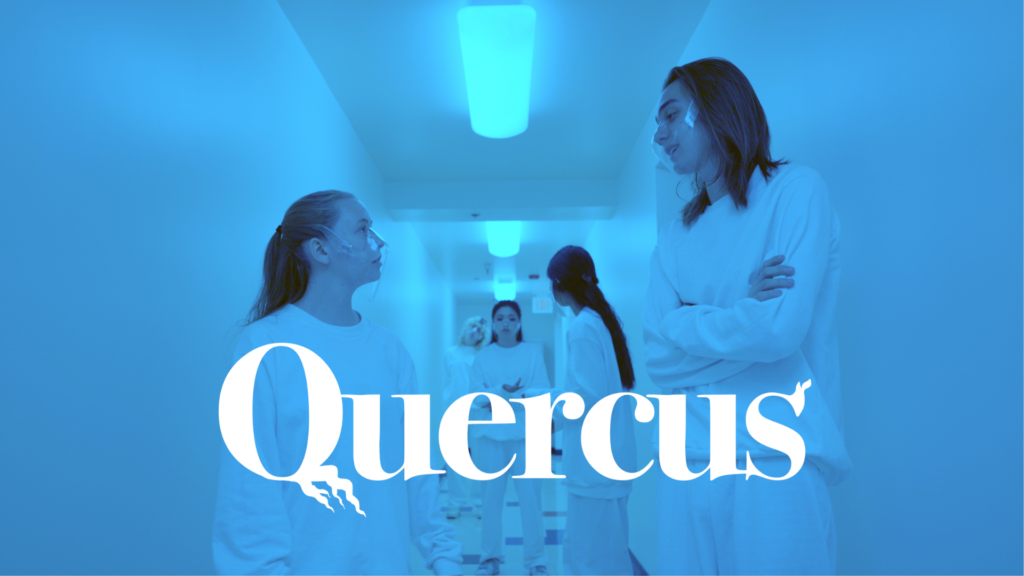
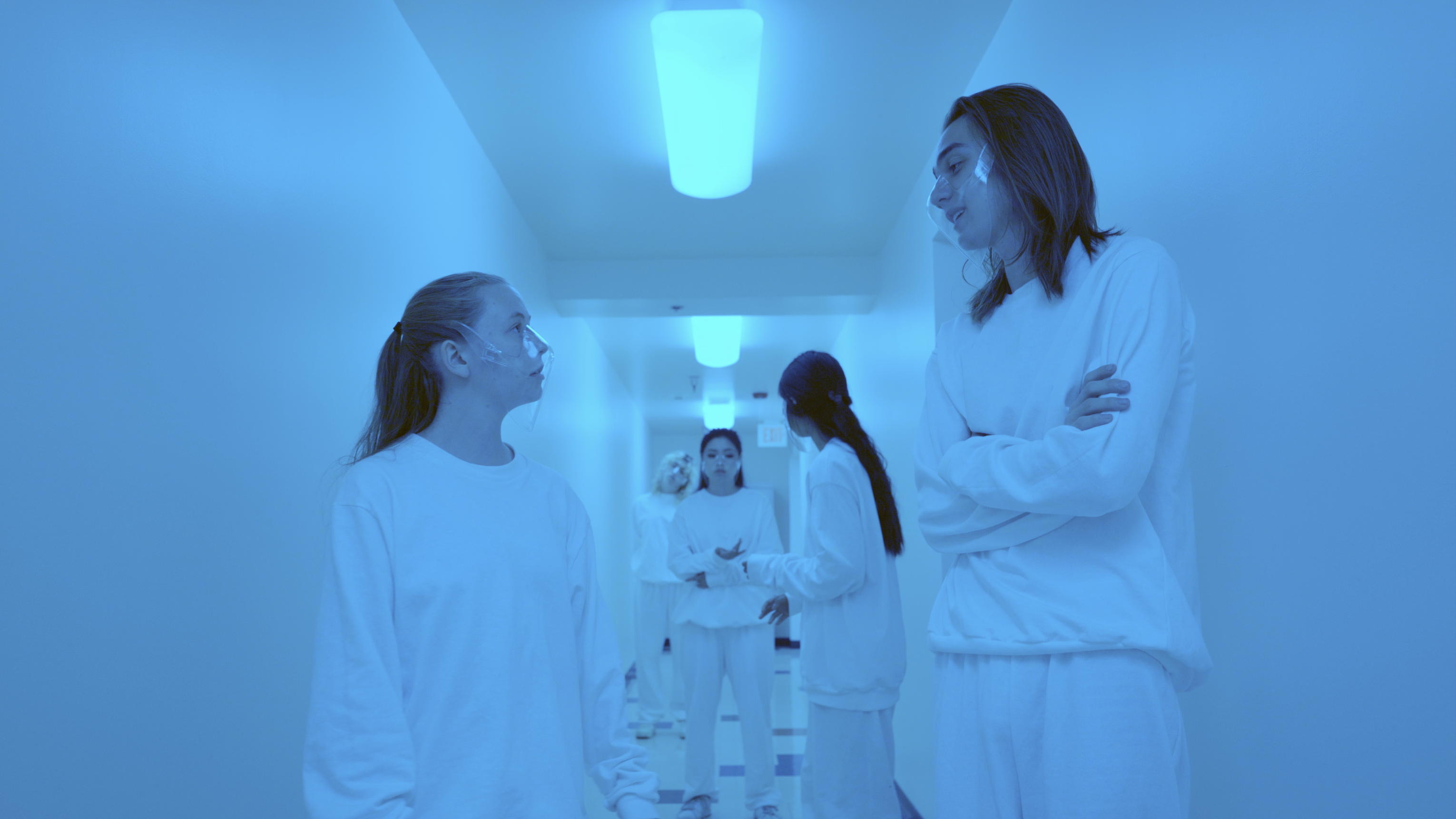

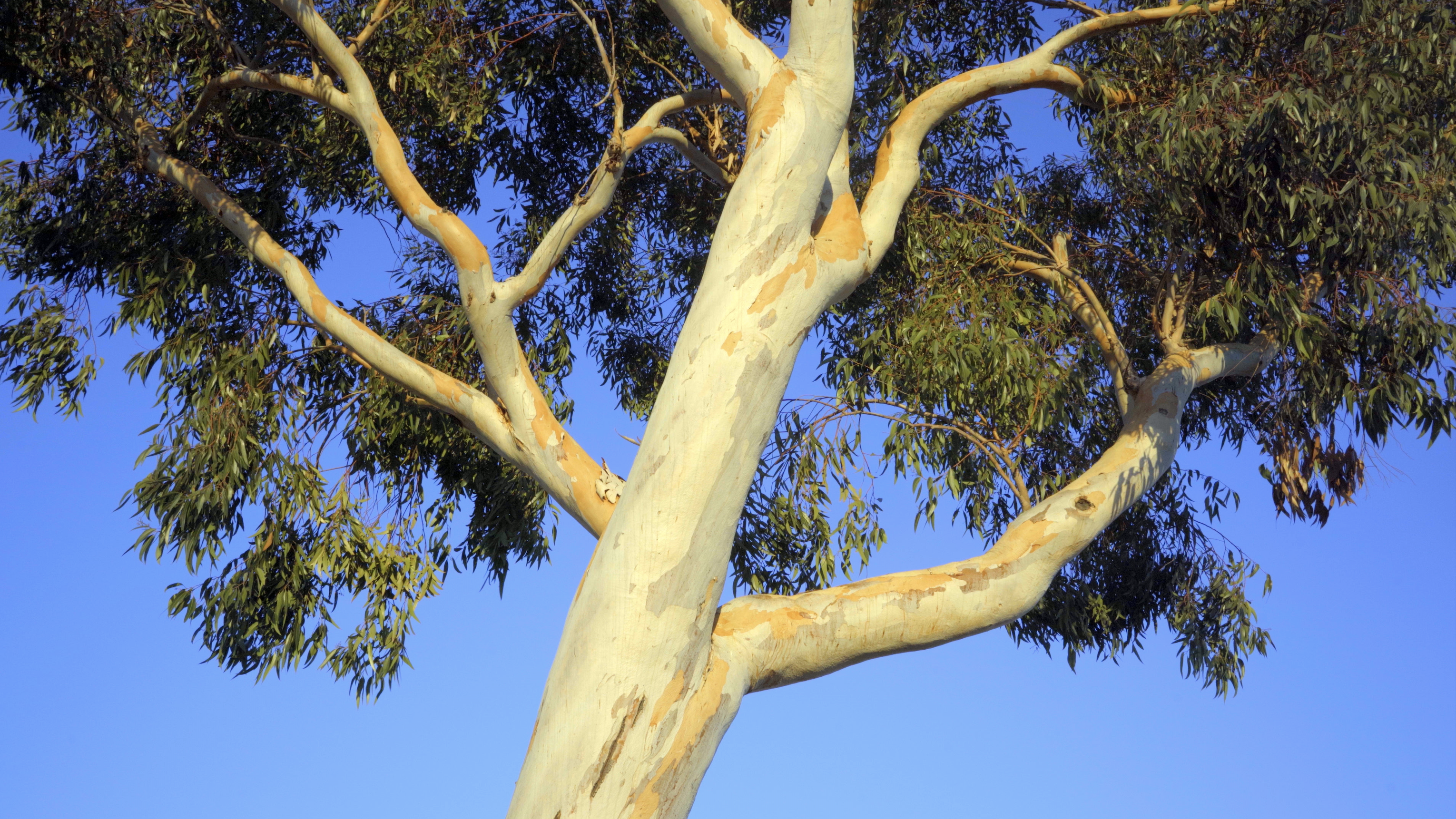
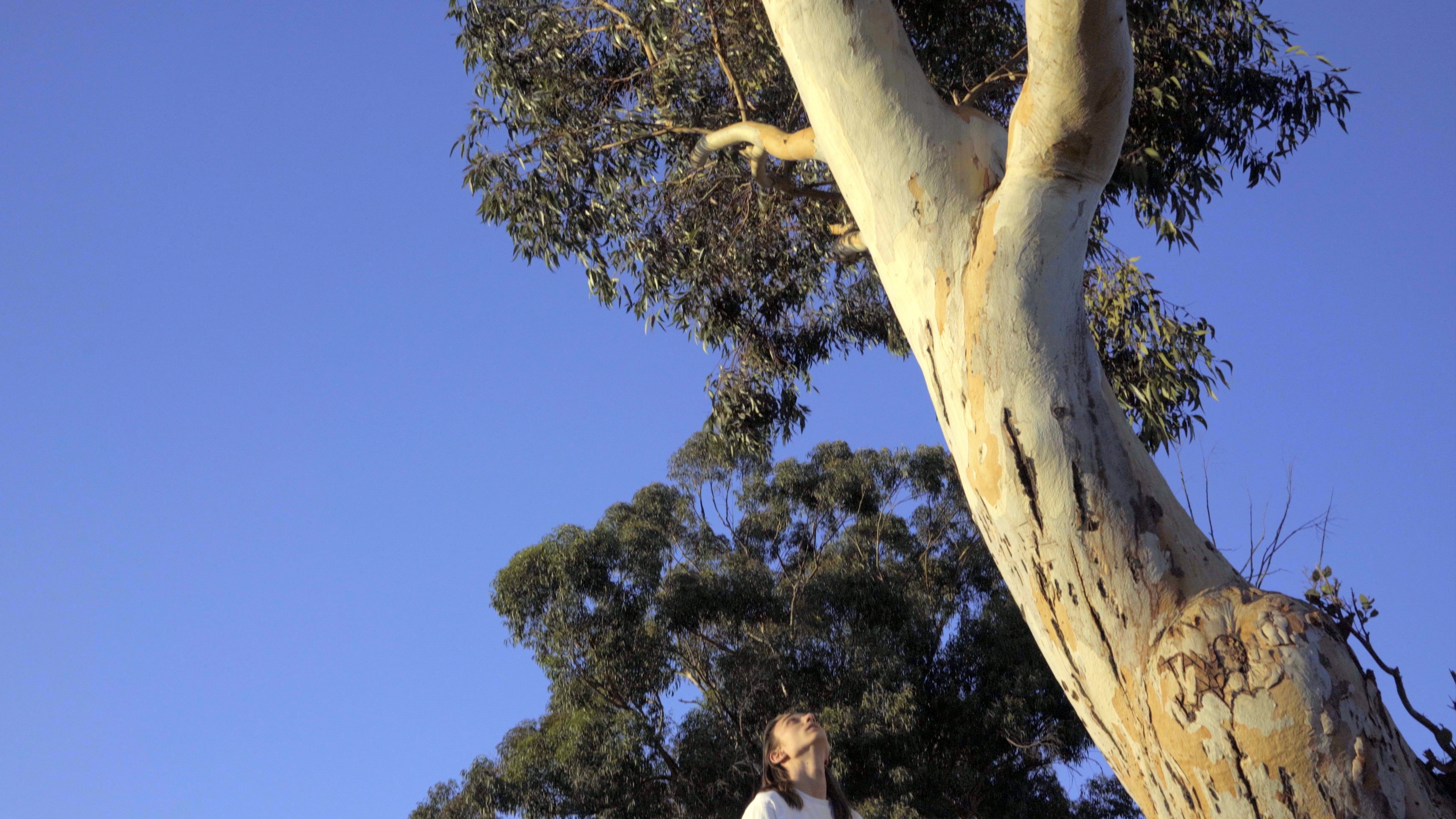
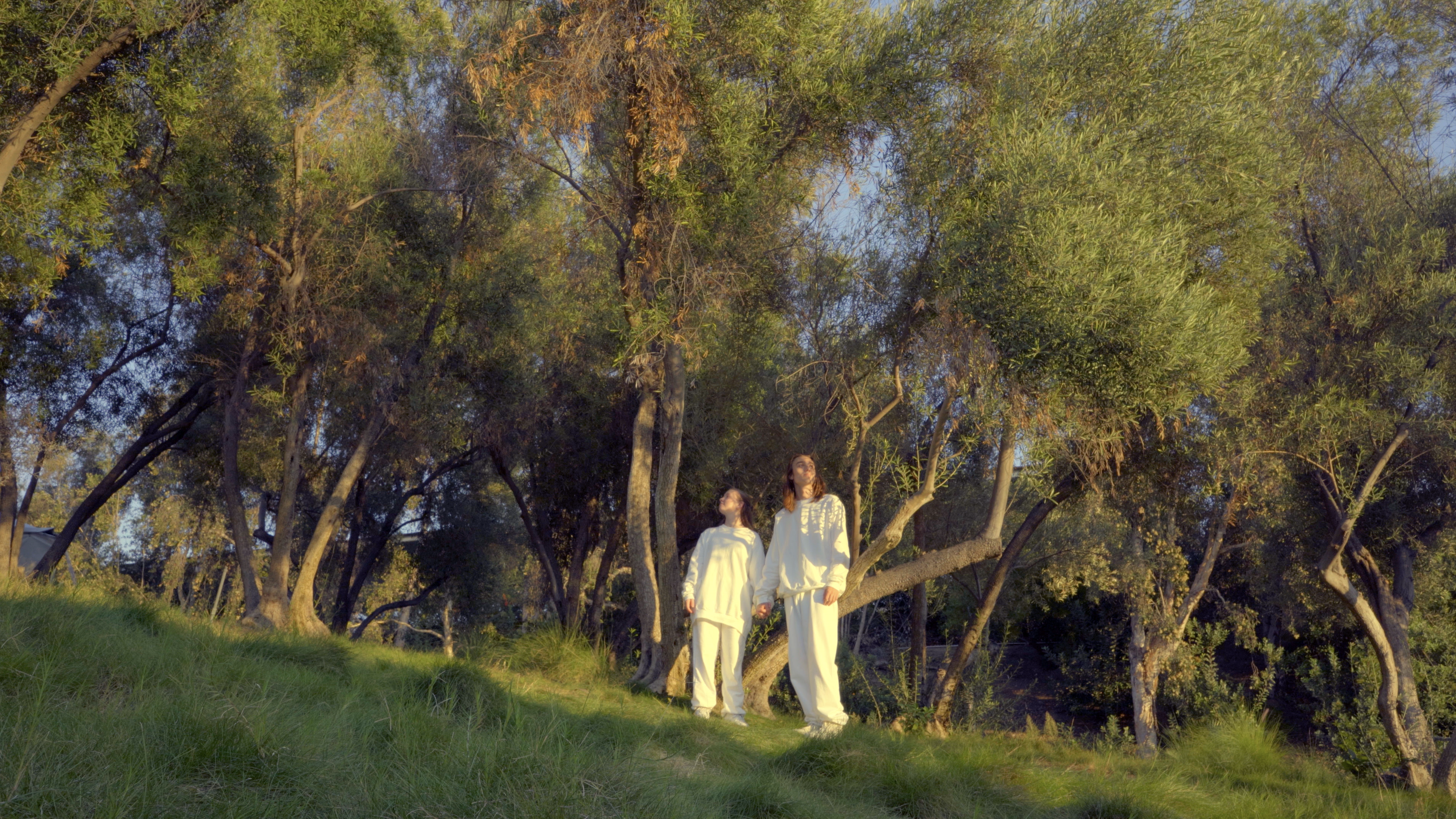
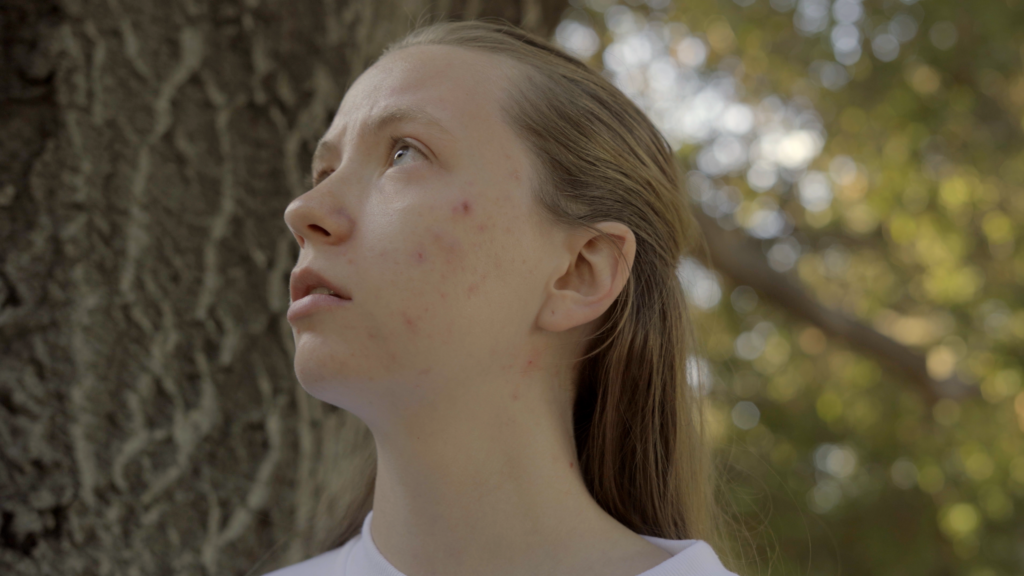
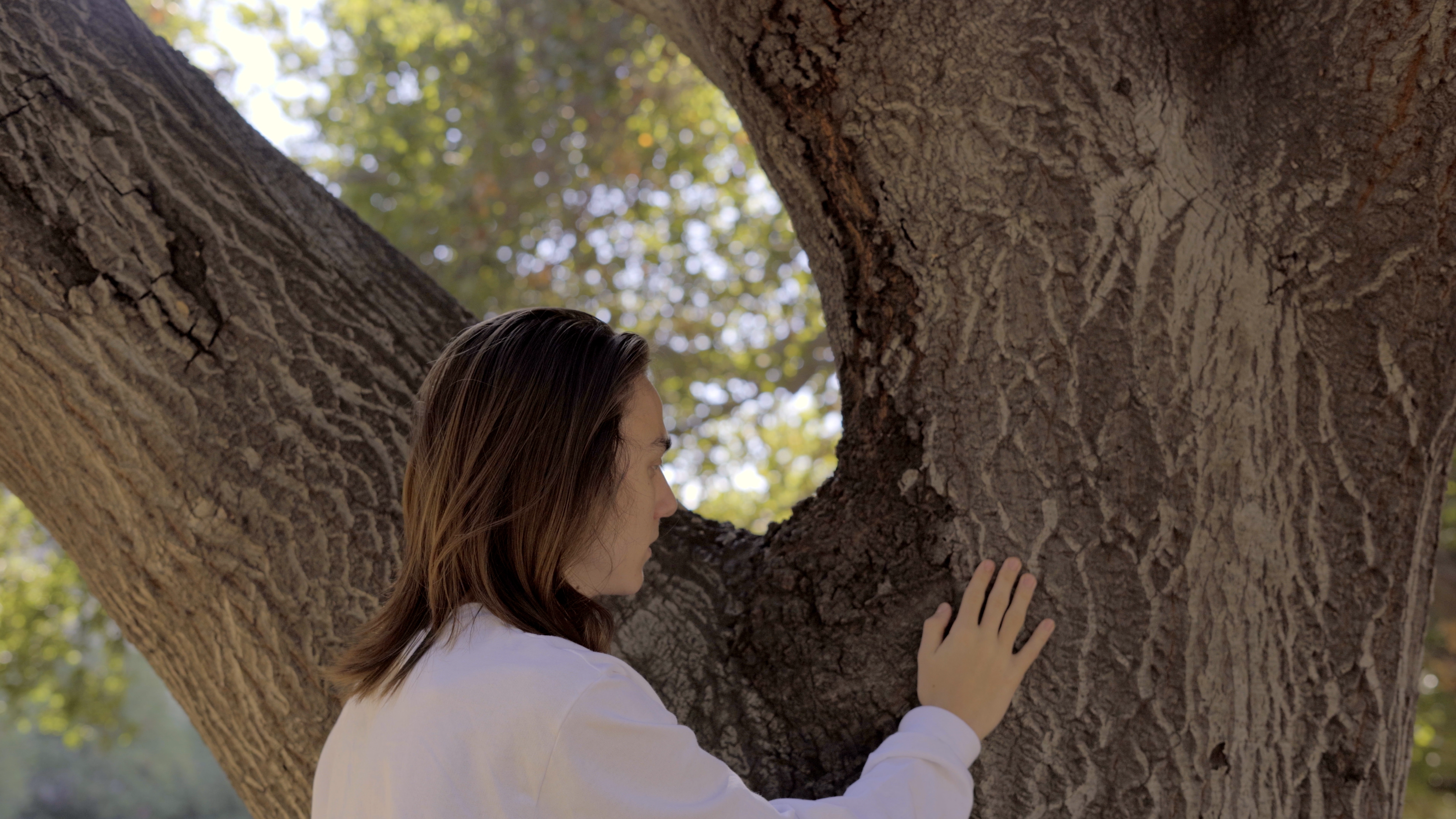
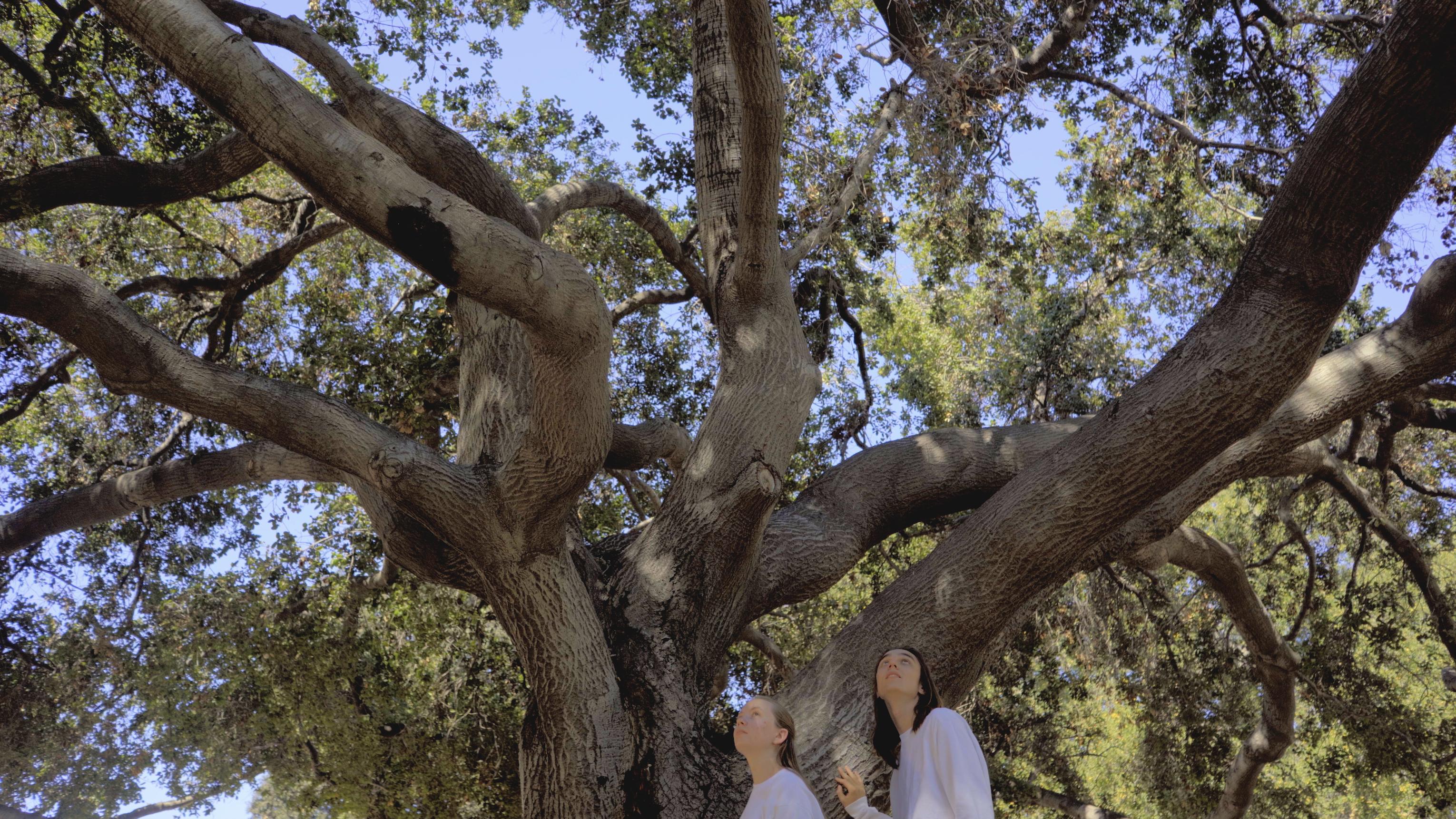
Written & Directed by Angelina Lee © 2022
4K UHD | Sync Sound | 2022
DIRECTOR Angelina Lee STARRING Max Gray Lennon Kuzniar Queenie Ngo
PRODUCER Ella Price CINEMATOGRAPHER Dana Dveris
SOUND RECORDIST Eric Johnson CONTACT Angelina Lee angelina.alanova@gmail.com | IMDb | Editing Process Book
Synopsis
Generations ago, climate disasters and rampant pollution rendered the surface of the planet unlivable. Humanity retreated underground to survive, sheltering in vast tech-dependent bunkers. All cultural memories of the volatile natural world receded as humans adapted to this new world. Their descendants now believe that their bare bunker represents the ideal human habitat, and that their sanitary, regulated stability lacks nothing.
Consequently, a novel immersive exhibit that is neither state-sanctioned nor state-opposed is able to circulate. This exhibit capitalizes on the rich store of photographic artifacts of “surface humans,” or from when humans lived above ground, creating an entirely convincing simulation through which museum visitors can view now-extinct trees. Unlike most, the character Linden has always been fascinated with these plants. Linden is one of few bunker residents with a great-grandparent who lived on the Earth’s surface as a child, and she grew up enthralled by stories her mother passed down about flowering trees that used to root on the Earth’s surface.
Earnest to see the museum exhibit for herself, she drags along her boyfriend Masper, who is indifferent to trees at best and only attends the exhibit to appease Linden. To Masper’s surprise, the extraordinary sights and sounds of a towering eucalyptus, olive, and finally oak tree change his worldview, inspiring in him the profound wonder that these leafy giants have cultivated for ages.
Director’s Statement
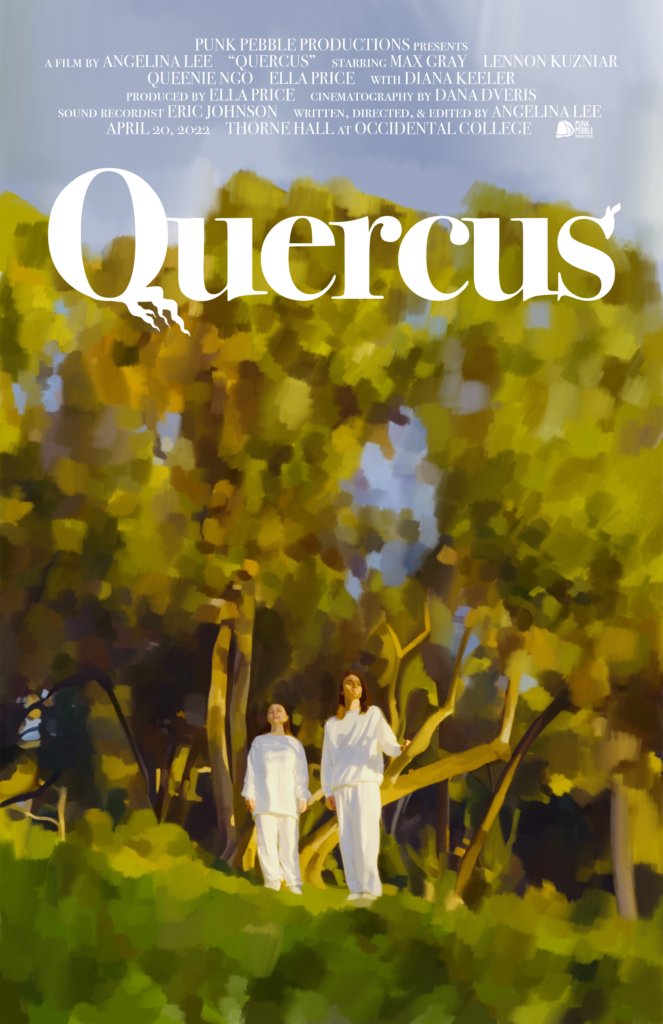
What do we lose in a world without trees, even if humans can materially survive without them? What is the human experience without these pillars of protection, infrastructure, and nourishment? The characters in Quercus live this reality. It is our world that they enter, puzzled and amazed –or at least a convincing simulation of what Earth looked like in the year 2022.
The title Quercus comes from the name of the oak tree genus. In doing so, the film nods to one of the most revered trees in human societies, its sturdy stoicism a nearly unparalleled wellspring of lore. As the centerpiece in the film’s finale, we filmed on an early Saturday morning on Occidental College’s beloved quad before many students had risen. In this way, this place represents some of my fondest memories as an undergraduate at Occidental, where several live coast oaks, or Quercus agrifolia, dreamily spread over benches.
We shot entirely on the college’s scenic campus, showcasing its unique mix of Southern California trees. Some of the trees are native to the state, like the oak species on the quad, with others representing how the California landscape has been transformed in the last few centuries with trees such as the eucalyptus halfway up Fiji Hill and Keck Theater offscreen by a copse of olive trees.
All of these trees appear in the film, forming characters of their own when Masper and Linden step into the exhibit. We experimented with camera angles to emphasize these trees’ sheer size proportionate to humans, and by extension the age needed to reach such sizes. Shooting at these locations made me realize for the first time how thoroughly ingrained Occidental’s built environment is with the natural landscape, as we devised creative ways to exclude any human infrastructure on-screen.
This film draws on the emerging tradition of “ecocinema,” a canon that arguably originated with the institutionalization of environmentalism in the 1970s and often veers toward the apocalyptic to emphasize futures that are frighteningly possible. Yet this film attempts to bridge both extremely optimistic and cynical views about the future of climate change, ending with a seedling of hope. It also speaks to its year of production, the last phase of the COVID-19 pandemic necessitating that masks be worn by student cast and crew indoors. We incorporated clear plastic masks that are implied to provide oxygen in a bunker free of oxygen-exhaling plants, allow us to still see characters’ expressions, and build on a streamlined, futuristic aesthetic.
Quercus pushes me to use defamiliarization, a literary technique that depicts a familiar world made unfamiliar, in reframing the ordinary Southern California landscape as alarmingly alien to future humans. Unlike my past works, this film focuses less on plant species identification and more on the deeply felt human relationship with trees in the environment. I hope to continue to create fiction and documentary works that enliven environmental issues such as drought, food production, and packaging waste.
